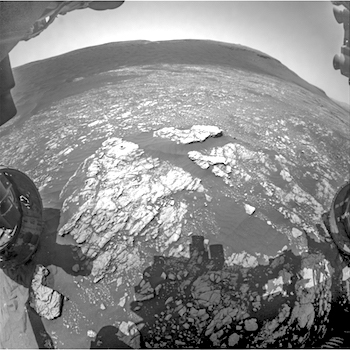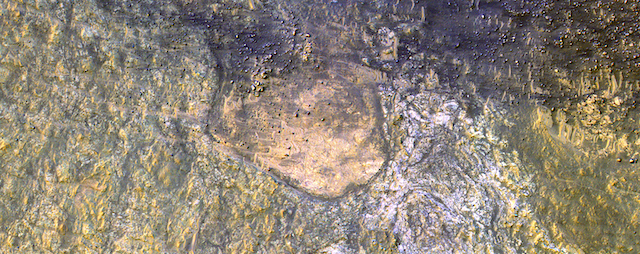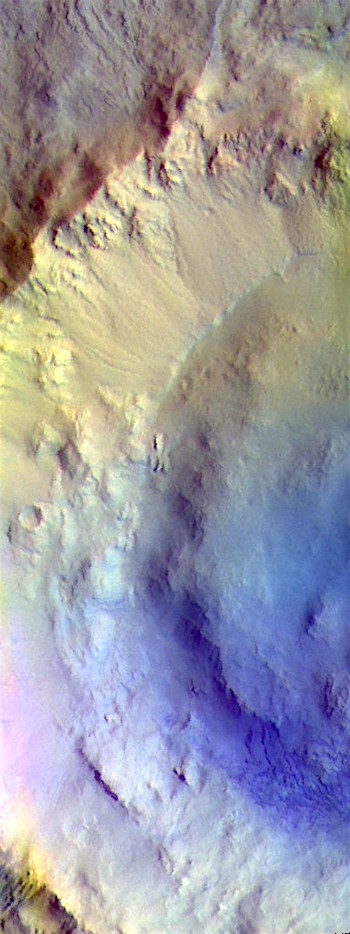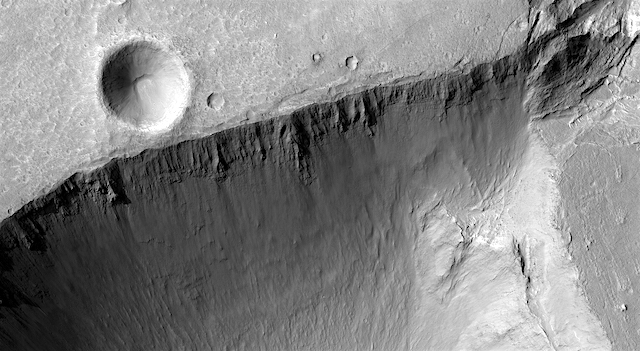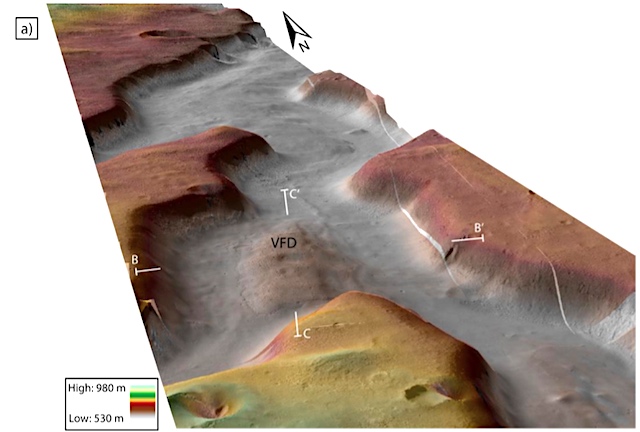 [Editor’s note: From a paper by Solmaz Adeli and five co-authors recently published in the Journal of Geophysical Research.]
[Editor’s note: From a paper by Solmaz Adeli and five co-authors recently published in the Journal of Geophysical Research.]
Geomorphological evidence of localized stagnant ice deposits in Terra Cimmeria, Mars
• Small debris‐covered stagnant ice deposits (termed valley fill deposits or VFD) are located inside a valleys system in Terra Cimmeria, Mars.
• Morphological properties (convex‐upward morphology, crevasses, and sublimation pits) suggest a current degradational stage of VFD evolution.
• The location of VFD within the ejecta blanket of Middle Amazonian Tarq crater points to impact into shallow ice as likely formation process.
In the last two decades with the increase of high resolution imagery data, more studies report the presence of ice deposits covered by dust and debris on the Martian surface, in both mid‐latitudes. These deposits must have been formed under different atmospheric conditions, since water ice is not stable in the current surface environment.
One of the generally accepted hypotheses for their formation is precipitation induced by variations of Mars’ axial tilt known as obliquity. During high obliquity phases, ice would have sublimated from the poles and re‐deposited in the mid‐latitudes.
Here, we report the presence of small‐scale ice deposits, located on the floor of a valley system in Terra Cimmeria. Although it is clear that these deposits were formed in different climatic conditions, their formation seems to be related to an impact into a shallow subsurface ice layer, redistributing a mixture of ejected material and ice across the region around the impact site.
This study shows the importance of local geological processes, e.g. impact cratering, in investigations of water ice distribution on Mars. Near‐surface ice reservoirs are of high importance in the search for life, and for future human exploration on Mars. [More at link]
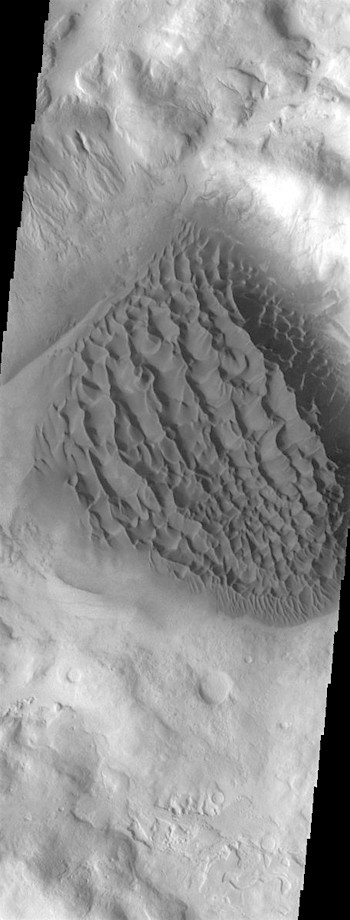 THEMIS Image of the Day, April 22, 2019. Today’s VIS image shows the floor of Matara Crater. A large sand sheet with surface dune forms dominates the floor of this crater located in Noachis Terra. The dunes’ dark tone indicates a lack of dust, which is light in tone. Thus the dune sands are probably active and moving under the wind.
THEMIS Image of the Day, April 22, 2019. Today’s VIS image shows the floor of Matara Crater. A large sand sheet with surface dune forms dominates the floor of this crater located in Noachis Terra. The dunes’ dark tone indicates a lack of dust, which is light in tone. Thus the dune sands are probably active and moving under the wind.








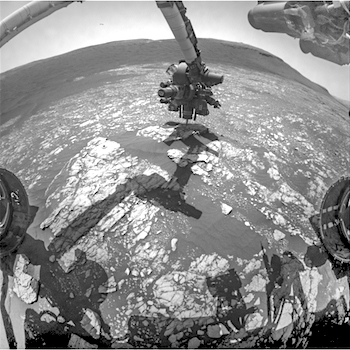
![Figure 11. Samples from HiRISE images over our three regions of interest from Section 3.4. Gemina Lingula exhibited low surface [thermal inertia], regions west of Chasma Boreale yield intermediate-to-high surface TI, and Olympia, which yields the highest derived TI. HiRISE image IDs (from top to bottom) are PSP_001650_2620, PSP_010171_2630, PSP_009979_2630. figure-11](http://redplanet.asu.edu/wp-content/uploads/2019/04/figure-11.jpg)
